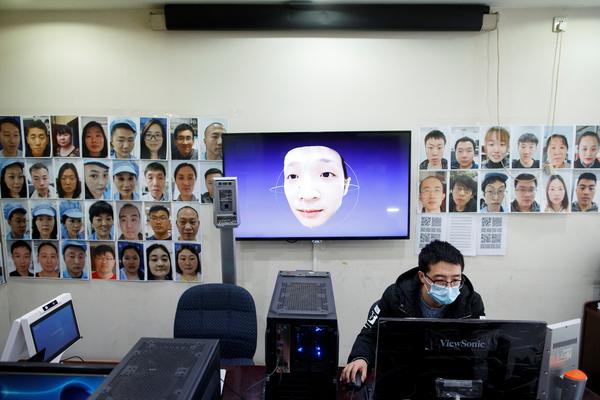14
09/2022
El uso de barbijos está dificultando el funcionamiento de los sistemas de reconocimiento facial.According to a study by the National Institute of Standards and (NIST) of the US. UU, que implicó el análisis de 89 algoritmos de los más actualizados actualmente, se identificaron tasas de error de entre 5 y 50% cuando se añadía un tapabocas al rostro que se buscaba reconocer.
“We began focusing on how an algorithm developed before the pandemic could affect it by people with facial masks. Más adelante, este verano, planeamos probar la precisión de los algoritmos que se desarrollaron intencionalmente teniendo en cuenta los rostros con tapabocas“, dijo en el comunicado oficial Mei Ngan, científico informático del NIST y autor del informe.
Understanding the functioning of this type of algorithm within the framework of this new normality that implies the almost continuous use of tapping is useful taking into account that this biometric factor is used to unlock the phone, as well as to verify identity in other types of other types of devices.In this sense it can also be a challenge for control and surveillance systems based on these data.
The research team digitally applied chins to the original photos of different faces, with the aim of testing the performance of the algorithms.In the study different variants of digital tapping were used that contemplated various shapes, color and coverage levels.

En el estudio concluyeron que los algoritmos más sofisticados fallaban aproximadamente el 5% de las veces e incluso muchos llegaron a tener una tasa de error de entre el 20 y el 50%.
Errors in facial recognition can take the form of a "false negative", where the algorithm cannot match two photos of the same person, or a "false positive", where he incorrectly indicates a coincidence between photos of two different people,It stands out in the report
Interested ones can DM me ❤️ This will be an hour long workshop onwriting a novel, pocket book, poetry book, etc… https://t.CO/T8VJKDOFM9
— Ajitabha Bose Mon May 10 15:00:38 +0000 2021
Además, los investigadores concluyeron que cuanto más cubra la nariz una máscara, menor será la precisión del algoritmo.
También comprobaron que la forma y el color de un barbijo son importantes: las tasas de error del algoritmo fueron usualmente más bajas con las máscaras redondas.In turn, black cappes further affected algorithm performance compared to blue.Anyway, in relation to this point, the report stands out that due to time and resources limitations, the equipment could not conclude the color effect.
This work was carried out in collaboration with the Directorate of Science and the Department of National Security, the Office of Biometric Identity Management and Customs and Border Protection.
The use of chinies generated a new challenge in the field of artificial intelligence.It would not surprise that in the future companies take into account this element to refine the operation of their algorithms. De hecho, en mayo, se supo que Apple añadió cambios en el código en iOS 13.5, sistema operativo móvil para iPhone y iPad, con el objetivo de que sea más sencillo desbloquear el celular cuando se esté utilizando barbijo.
As you can see in shared videos at the time, the Apple devices that integrate facial recognition will immediately jump to the screen that requires the entry of the numerical code if it is detected that the user has a mask, an increasingly widespread prevention measureRoot of Coronavirus advance.
More on this subject:
Cómo es Incógnito, la joya que se creó para engañar a los sistemas de reconocimiento facialUn artista usó algoritmos para hacer retratos híper realistas de Napoleón, El David de Miguel Ángel y La Estatua de La LibertadCómo es Reformer, la nueva red neuronal de Google
- 861
- Do masks deceive facial recognition?
Related Articles
How to remove blackheads from the nose - Tips and tricks
04/02/2022Rating: 4.6 (20 votes)3 commentsBy Marta Vicente. Updated: September 10, 2021 Blackheads are very common in some areas of the face, such as the nose, since it is in these places where...
5 tourism innovations born in the pandemic that have come to stay
01/02/2022In the 20 months since the start of the COVID-19 pandemic, technological innovations have gone from futuristic to familiar. Nowadays it has become habitual in our day to day...
Get all the information you need for Miami Ultra Music Festival 2018 Get all the information you need for Miami Ultra Music Festival 2018
31/01/2022Are you ready for Ultra Miami next week? If so, it doesn't hurt to maximize your experience with this essential information.Ultra Music Festival is preparing to open its doors next...
46 Best World War II German Helmet in 2022 - Based on 793 Customer Reviews and 57 Hours of Testing
10/04/2023Yes, Mil-Tec German M35 Steel Helmet Reproduction GMII (M) is one of the most sought after WWII German Helmet, it doesn't meet everyone's needs and can be a bit expensive. That's why,...